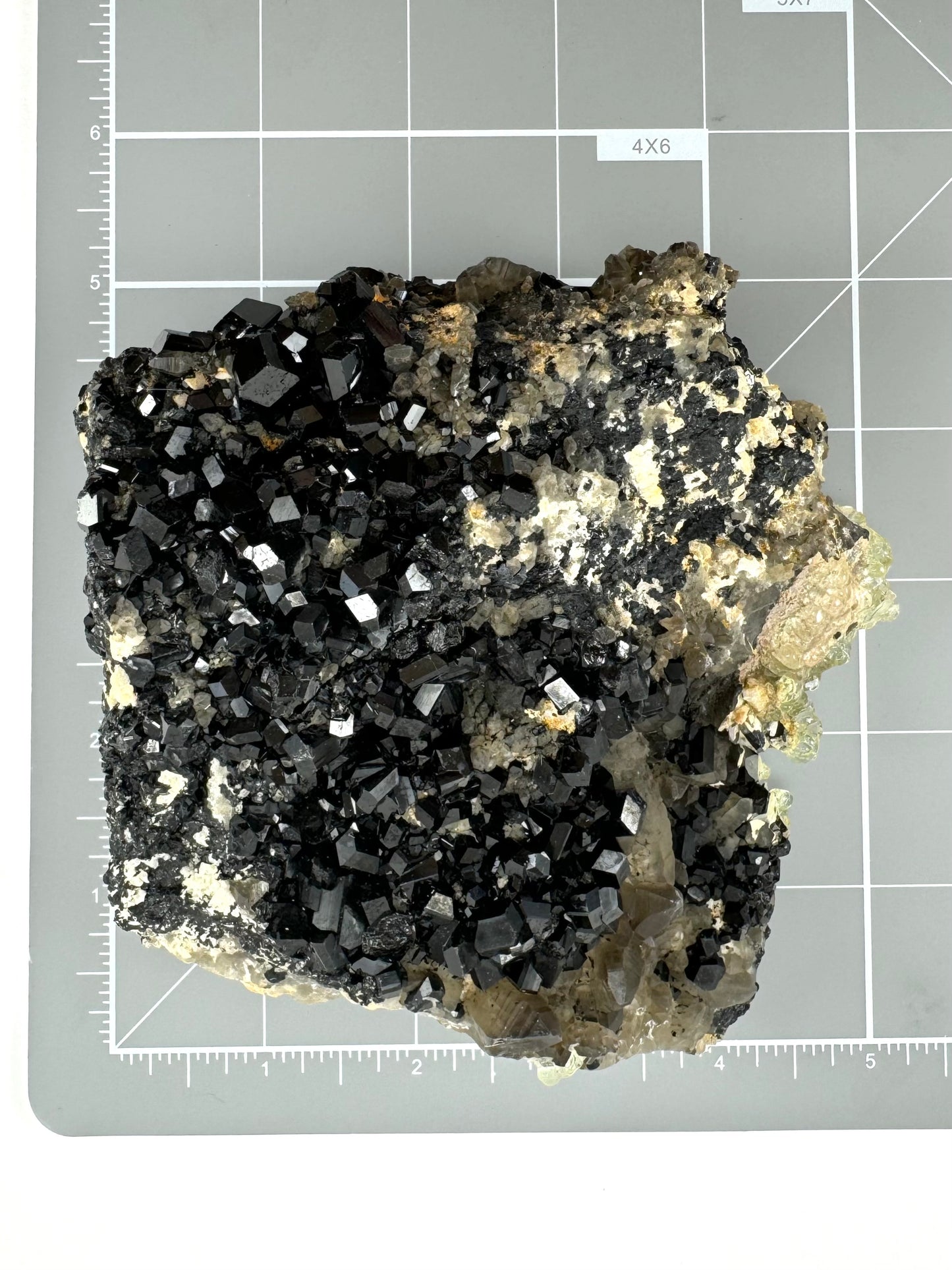Black tourmaline and smoky quartz on albite matrix with hyalite
Black tourmaline and smoky quartz on albite matrix with hyalite
Couldn't load pickup availability
Locale: Erongo Mountain, Namibia
Approx dimensions: 4.5 x 4 x 1.5"
Approx weight: 728g (1.6 lbs)
This large specimen is one of my favorites of the Erongo black tourmaline, known as schorl. The piece is a rough aggregate of minerals appearing to contain albite, schorl, and smoky quartz. The front is nearly entirely covered with dozens of blocky small schorl crystals, some displaying the Mercedes termination characteristic of the Erongo region. Erongo schorl also typically has very high luster, but there is a fine almost spit-like mineral coating that slightly obscures the reflections on the crystal.
There are several clusters of smoky quartz on the the specimen, light colored with a frosted surface. Smoky quartz gets its dark coloration from trace elements that tint dark when the quartz is exposed to natural radiation. Don’t worry, the specimen can't expose you to radiation—even if the hyalite turns "radioactive" green under UV light due to trace elements of uranium.
Hyalite is a form of opal, which in turn is part of the broader quartz family. Hyalite is a form of opal, which in turn is part of the broader quartz family. Hyalite displays botryoidal growth (bunches of “grape-like” round crystals) with a glossy high luster like a layer of bubbles.
Hyalite can appear fluid with formations that look like the splash from a drip frozen in place, or as if the edge has been peeled up away from the quartz like a tutu. The thick hyalite at the top of the specimen is a great example of this, with an especially three-dimensional splash-like formation.
UV reactivity Hyalite is so strongly UV reactive that you can see it in sunlight. Under indoor lighting it is pale yellow to golden in color, but turns visibly greenish yellow when exposed to the UV in sunlight. 395nm UV fluoresces a strong green, with an icy blue undertone. Best viewed in darker conditions. 365nm UV fluoresces a strong yellowish-green color, generally visible even in bright lighting. No phosphorescence detected.





















